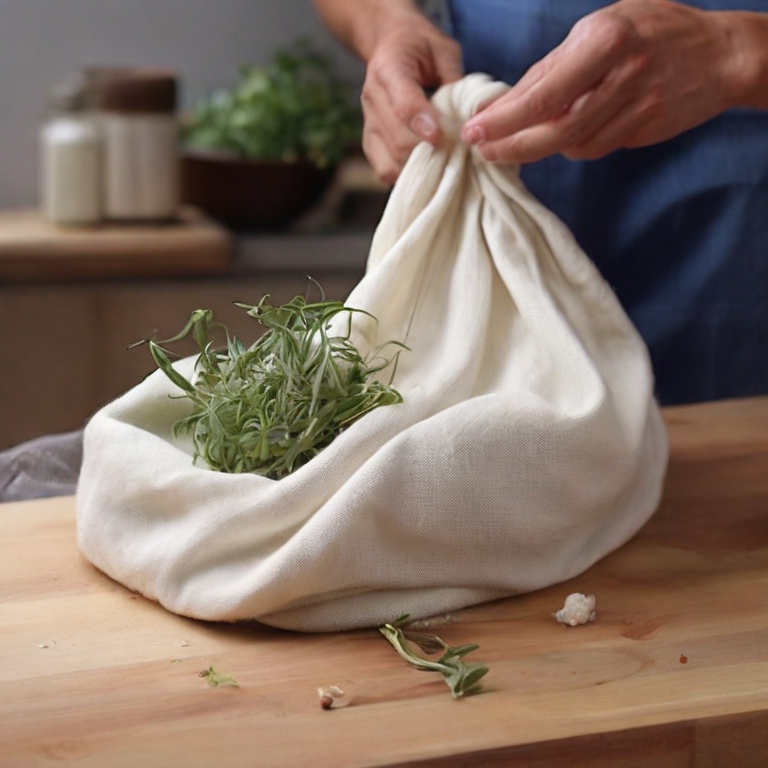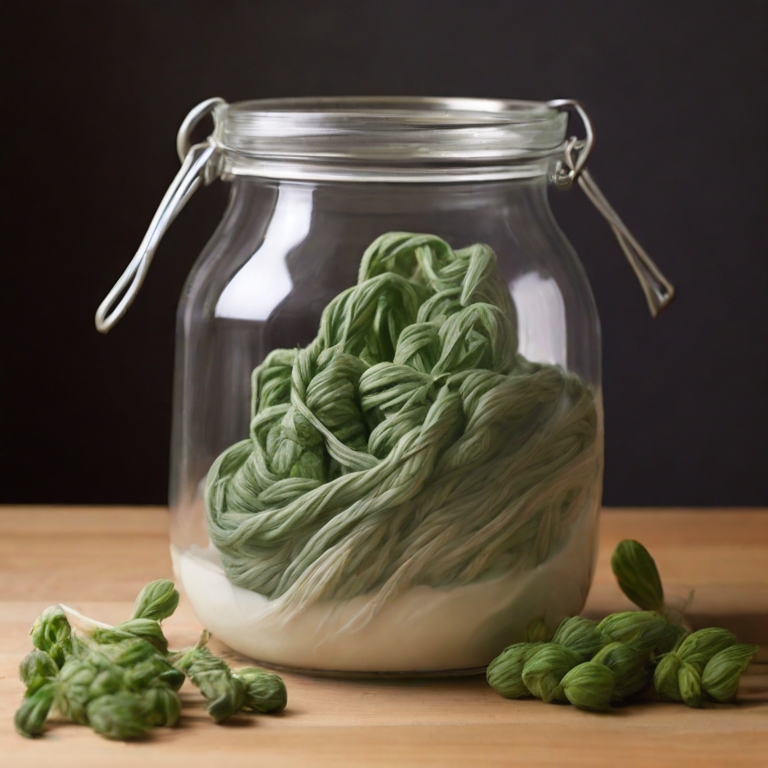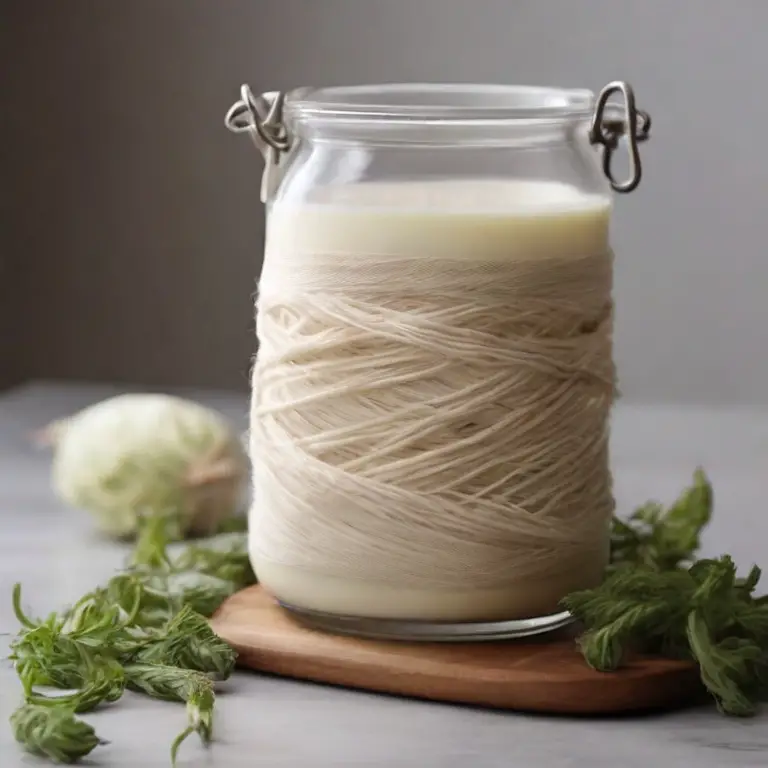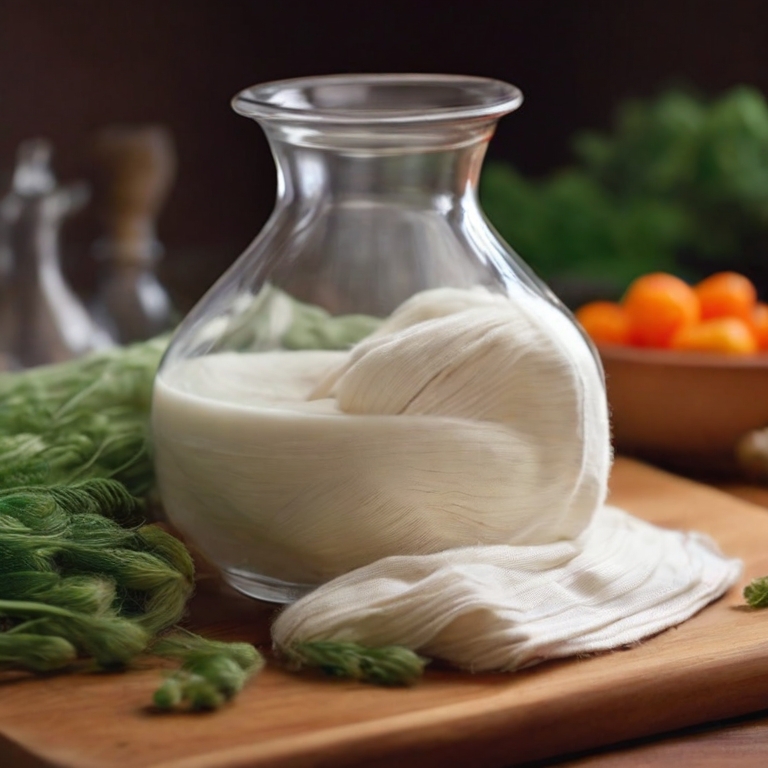Strainers come in handy for straining liquids or solids from other materials. They also allow you to remove unwanted particles, such as seeds, stems, leaves, etc., from your food. Cheesecloth is often recommended for straining foods because it has holes that let liquid pass through easily.
But cheesecloth isn’t always ideal for straining foods. There are several ways to strain foods without using cheesecloth. The most common way is to use a colander lined with paper towels. Another option is to use a fine mesh sieve. For some recipes, however, you might want to try out these alternatives to cheesecloth.
What is cheesecloth?
Cheesecloth is made out of cotton fibers and is used to make homemade cheeses. You can use it to strain milk, juice, wine, beer, water, coffee, tea, etc., and even to make homemade ice cream.
The material is very easy to work with and you don’t need much equipment to produce great results. In fact, you can do everything from start to finish without spending too much money.

Versatility of Cheesecloth
Cheesecloth is a versatile kitchen tool that can be used for a wide variety of tasks. Its fine weave makes it perfect for straining liquids, making it ideal for draining homemade yogurt or cheese or for straining sauces and soups. The lightweight fabric is also excellent for wrapping and storing herbs, as it allows air to circulate while keeping them fresh.
Additionally, cheesecloth is a popular tool for making homemade spice blends or sachets, as it can be easily tied and secured. Its soft and absorbent texture also makes it great for cleaning and polishing, as it won’t scratch delicate surfaces.
Cheesecloth is also commonly used in craft projects, such as for creating ghosts for Halloween decorations or for a variety of other DIY projects. With so many uses, cheesecloth is a truly versatile tool that belongs in every kitchen.

What Can You Use If You Don’t Have Cheesecloth?
If you find yourself in a situation where you don’t have cheesecloth on hand, there are a few alternatives you can use. One option is a clean kitchen towel or a piece of muslin fabric. Simply double or triple up the layers to create a fine mesh that can strain liquids or bundle up herbs and spices.
Another alternative is to use a coffee filter, which can effectively strain out impurities from liquids. You can also use a fine mesh sieve or a fine wire mesh strainer for similar purposes. For making cheese, you can try using a clean cotton pillowcase or a clean dish towel to strain the whey from the curds.
If you are in a pinch, improvising with these household items can help you achieve similar results to using cheesecloth. However, keep in mind that the effectiveness may vary depending on the specific task at hand, so using actual cheesecloth is still the best option when possible.

How do people use cheesecloth?
Cheesecloth is used in cheesemaking to help separate milk solids from the liquid portion of milk. This helps prevent curdling and spoilage. In addition, it allows you to see how much whey there is in the mixture. You can also use cheesecloth to strain custard or sauce mixtures.
For example, you could strain out the egg yolk from a recipe for a lightened version of a baked good like a cake or pie crust. Or you could strain out the seeds from a fruit purée to make a smoothie. Finally, cheesecloth is often wrapped around cakes and fruits to keep moisture away from the surface.
How to strain not using cheesecloth
This method is similar to the one above, except that you won’t be using cheesecloth. Instead, you’ll be using a funnel. A funnel is simply a cone-shaped object with a small opening at the base. You can buy these cheaply online or at most grocery stores.
To use a funnel, put the strained item into a container. Then, cover the container with a lid. Next, put the funnel over the top of the container. Now, pour the liquid out of the funnel into another container.
Repeat steps 4-10 until no more liquid comes up. Once again, rinse the container with warm water and dry it thoroughly before storing it.

What to Use If You Don’t Have Cheesecloth
Cheesecloth is an essential ingredient in many recipes. But it doesn’t come cheap. So what do you use if you don’t have cheesecloth? Here are some alternatives.
1. Paper Towels
Paper towels work great for cleaning up spills. They absorb liquid easily and dry quickly. However, paper towels aren’t as effective at straining liquids because they don’t hold their shape well.
2. Cotton Tissues
Cotton tissues are inexpensive and absorb liquids well. They’re also soft enough to clean delicate surfaces like glassware. Plus, cotton tissues are reusable.
3. Cloth Napkins
Cloth napkins are ideal for wiping down counters and tables. They’re durable and won’t tear easily. Plus, cloth napkins are reusable.
4. Silicone Bags
Silicone bags are perfect for storing leftovers. They’re lightweight and easy to store. And they’re dishwasher safe.
5. Plastic Wrap
Plastic wrap works just fine when you want to cover food. It’s inexpensive and disposable. Plus, plastic wrap is flexible so you can roll it into a tube and squeeze it tightly to remove excess air.
6. Bubble Wrap
Bubble wrap is great for wrapping food. It keeps things fresh and prevents them from drying out. Plus, bubble wrap is reusable.
7. Aluminum Foil
Aluminum foil is one of the most versatile kitchen tools. It can be used for lots of different purposes. For instance, aluminum foil makes a great baking sheet. It’s non-stick and conducts heat evenly. Plus, aluminum foil is reusable.
8. Waxed Paper
Waxed paper is great for lining cookie sheets. It’s sturdy and holds its shape well. Plus, waxed paper is reusable.
9. Fine mesh bags
They are a great tool for cleaning out your kitchen or pantry, especially if you have large amounts of grains like rice or wheat. They make it easy to separate the good stuff from the chaff. You can use nylon or polyester mesh bags. If you don’t want to buy one, you can easily sew up some yourself.
10. Coffee Filters
Coffee filters are great substitutes for the traditional cheesecloth used to filter out unwanted particles from coffee beans. However, they are not as durable, nor do they work as well as cheesecloth. While cheesecloth is made of natural fibers, coffee filters are made of paper. Paper does not hold up as well under pressure, and it cannot be reused like cheesecloth.
Frequently Asked Questions [FAQs]
What are some alternatives to cheesecloth for straining?
Some alternatives to cheesecloth for straining include using a fine mesh sieve, muslin, a clean kitchen towel, pantyhose, or a nut milk bag.
Can I use a kitchen towel as a substitute for cheesecloth?
Yes, a clean kitchen towel can be used as a substitute for cheesecloth when straining liquids or making cheese.
Is pantyhose a suitable replacement for cheesecloth?
Pantyhose can be used as a substitute for cheesecloth when a fine straining material is needed, but make sure it is clean and unused.
What can I use as a substitute for cheesecloth in straining yogurt or nut milk?
In place of cheesecloth, you can use a fine mesh sieve, muslin fabric, a nut milk bag, or even a clean kitchen towel for straining yogurt or nut milk.
Can I use medical gauze as a cheesecloth alternative?
Yes, clean and unused medical gauze can serve as an alternative to cheesecloth for straining and filtering liquids or making cheese.
What is a good substitute for cheesecloth in the straining process?
A good substitute for cheesecloth in the straining process includes using a nut milk bag, muslin fabric, a fine mesh sieve, or a clean kitchen towel.
Conclusion
In short, there are plenty of ways to strain liquids without cheesecloths. The key is finding the right method that fits your needs. Some methods are better than others depending on the type of liquid being strained. For example, using a funnel is best for filtering milk. On the other hand, using a sieve is best for straining the juice. So, which method should you use? Well, that depends on how much time you have and what kind of liquid you’re trying to strain.

Meet our air fryer recipe expert, Jenny J. Brown. Jenny is a culinary enthusiast with a passion for creating healthy, delicious meals using the latest kitchen appliances. As an experienced home cook and food blogger, Jenny has spent years experimenting with air fryer recipes and perfecting her techniques to create meals that are both nutritious and satisfying.

